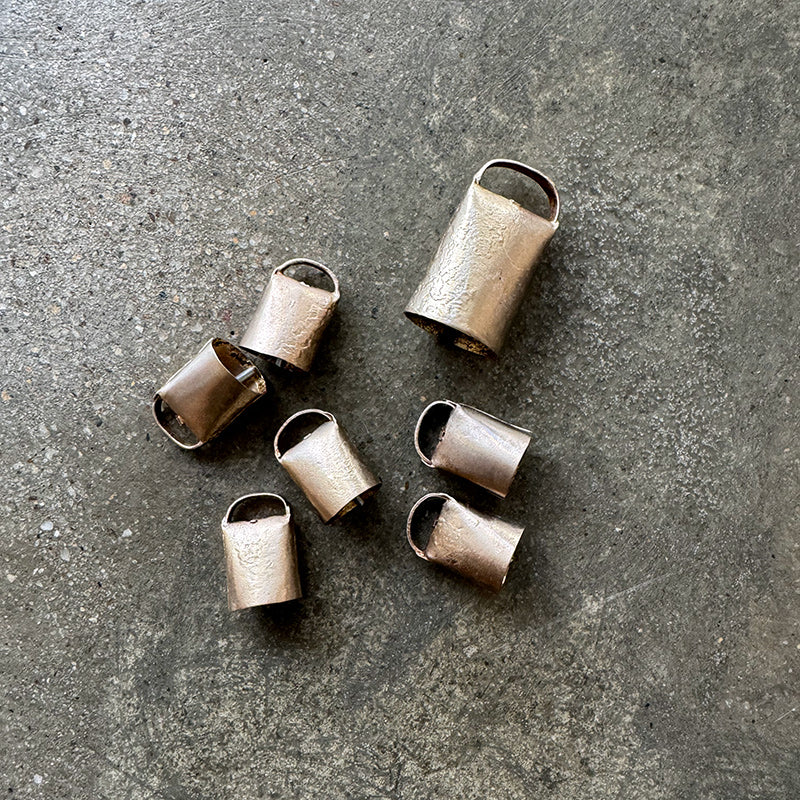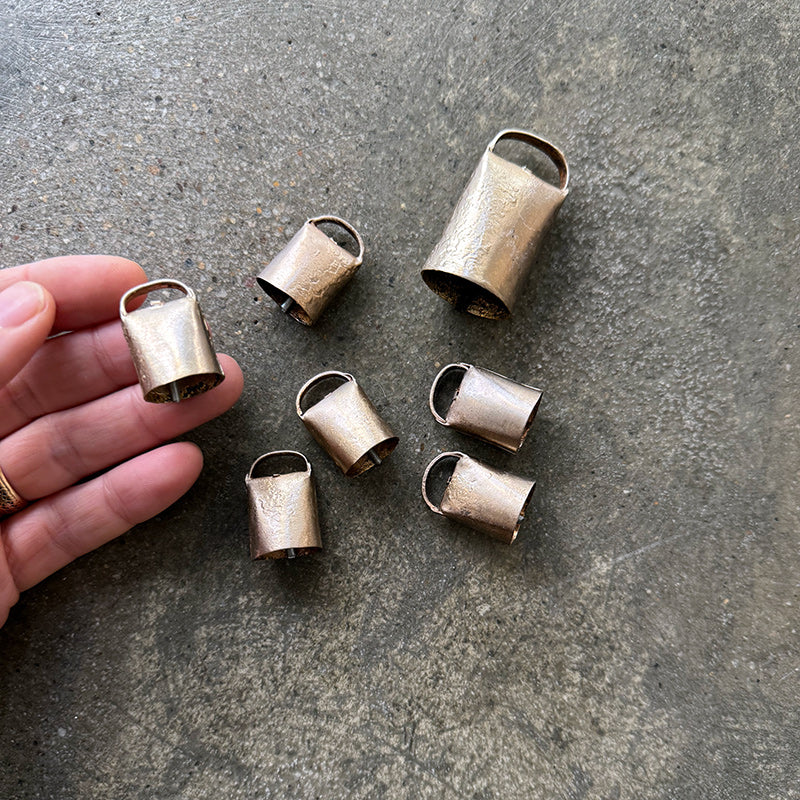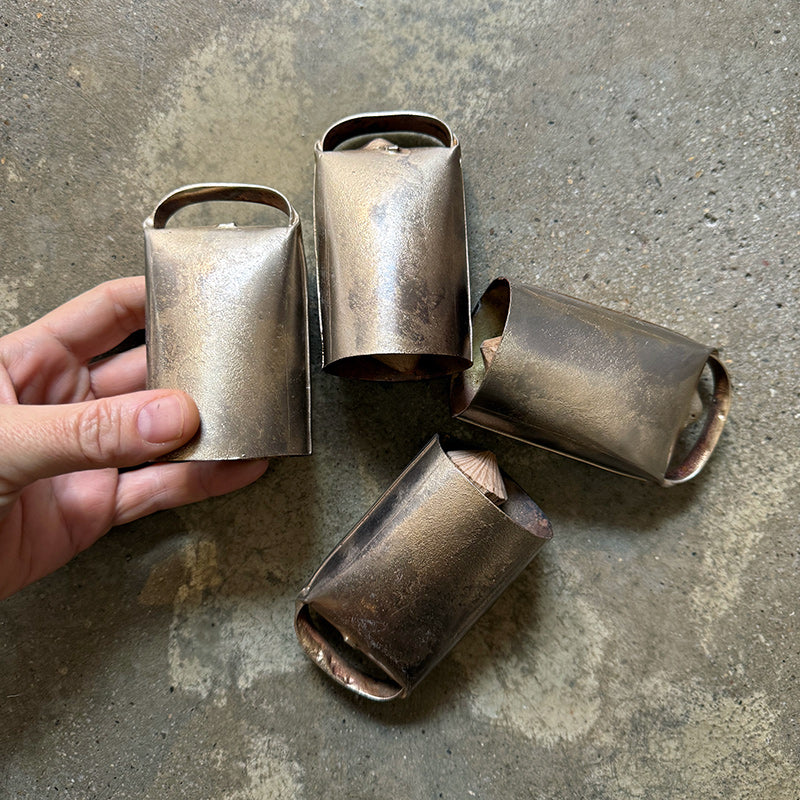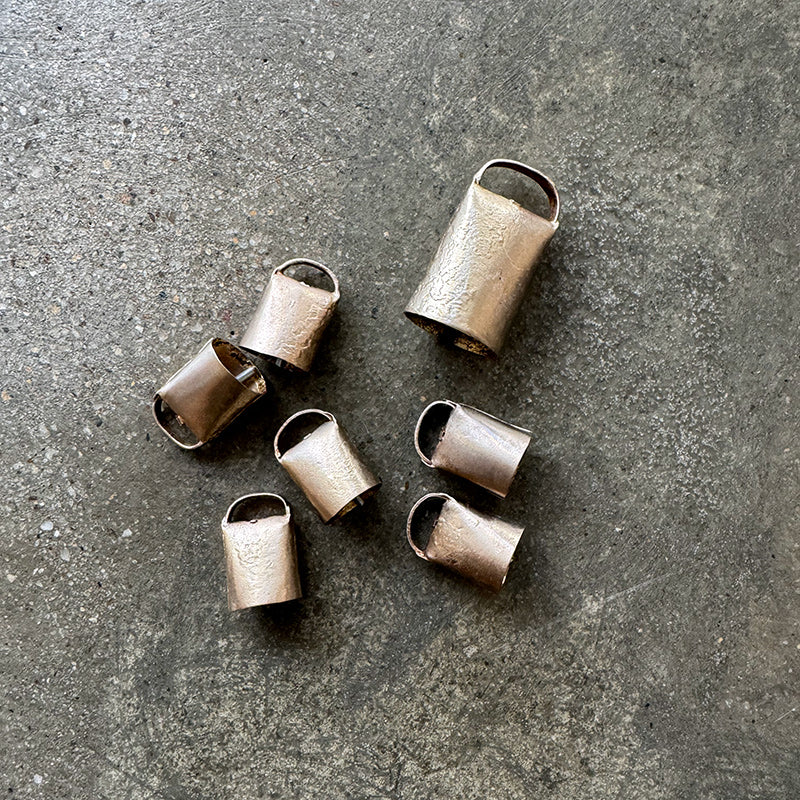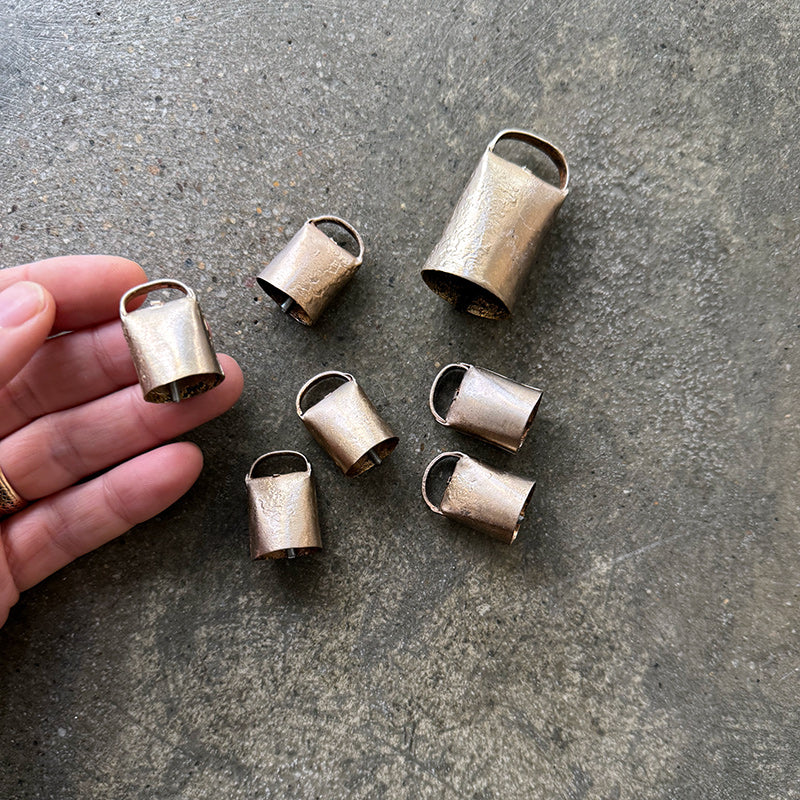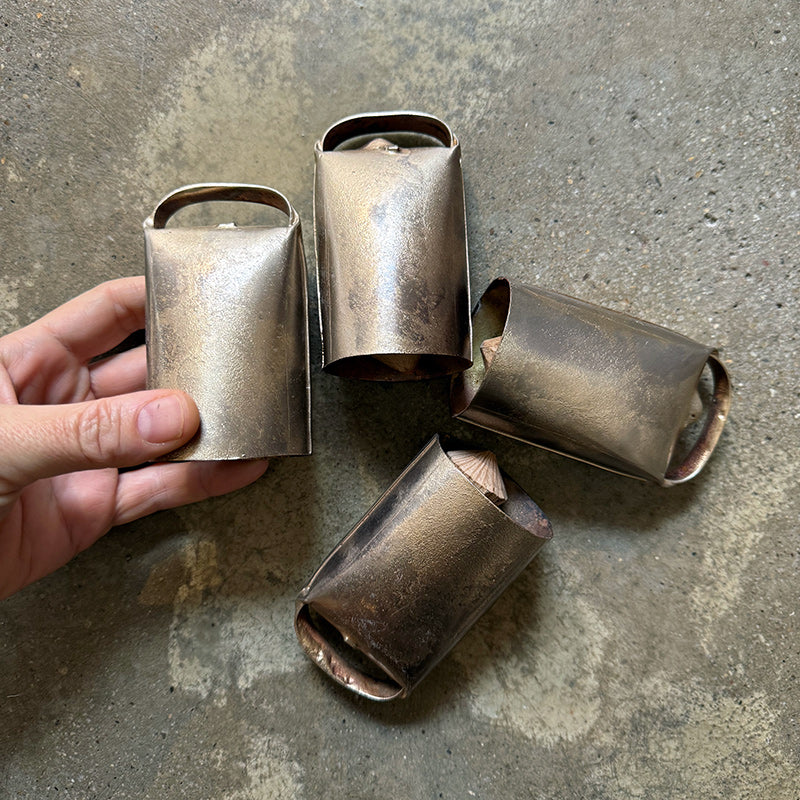Retrosaria
Chocalho
Couldn't load pickup availability
Handmade Portuguese chocalho (cattle bell). The manufacture of Portuguese cattle bells was inscribed by UNESCO in 2015 on the List of Intangible Cultural Heritage in Need of Urgent Safeguarding. These small bells are manufactured for smaller animals such as ferrets, chickens and turkeys, but can also be used in sewing projects, jewellery or as decorations.
Sizes available:
- nº 0: 2.5 cm height x 1.9 cm diameter, with a metal clapper (5g)
- nº 3: 4.5 cm height x 2.5 cm diameter, with a metal clapper (15g)
- nº 8: 9.5 cm height x 5.2 cm diameter, with a wooden clapper (120g)
The Portuguese cattle bell is traditionally used by shepherds to locate and control their livestock, and creates an unmistakable soundscape in rural areas. The bells are handmade from iron, which is cold-hammered and folded on an anvil until it is cup-shaped. Small pieces of copper or tin are set around the iron and enveloped in a mixture of clay and straw. The piece is fired, then plunged into cold water for rapid cooling. Finally, the burnt clay is removed, the copper- or tin-covered iron is polished and the tone of the bell is fine-tuned. The technical expertise involved is transmitted within the family from fathers to sons. Alcáçovas in Portugal is the main centre for manufacture of cattle bells and its inhabitants take great pride in this heritage. However, this practice is increasingly becoming unsustainable due to recent socioeconomic changes. New grazing methods have largely obviated the need for shepherds and cowbells are increasingly made using cheaper industrial techniques. At present, there are only 11 surviving workshops and 13 cowbell makers, 9 of whom are over 70 years old. (Via UNESCO Intangible Cultural Heritage)
Made in Portugal.
Share
